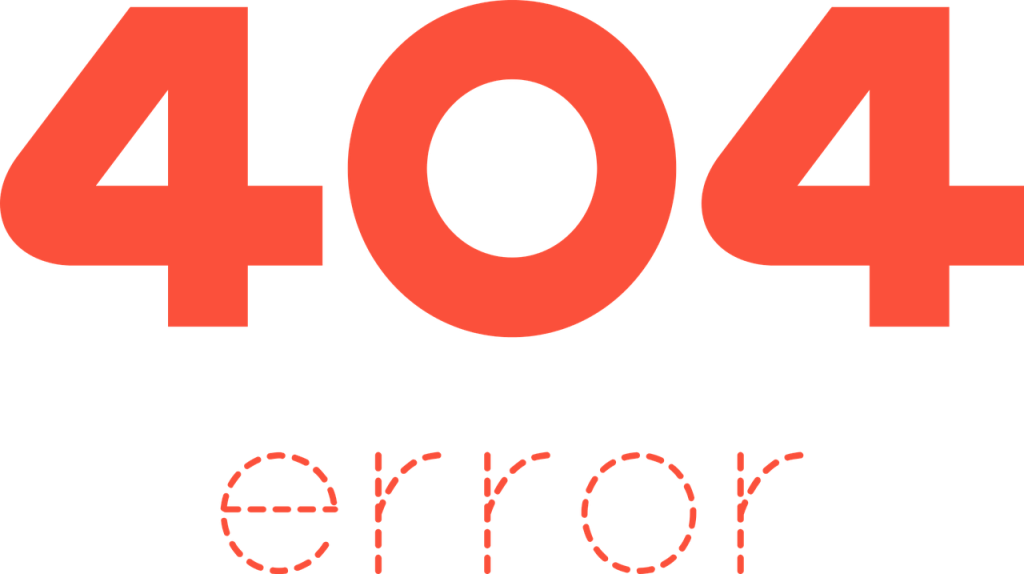In the ever-evolving realm of virtualization, encountering error messages is a common occurrence for users of VirtualBox. These cryptic notifications can be frustrating and bring productivity to a halt. However, fear not, for this article serves as a comprehensive guide to deciphering and resolving some of the most common VirtualBox error messages. By equipping you with a thorough understanding of these errors and providing step-by-step solutions, you will be able to overcome these obstacles and make the most out of your virtualization experience.

Error Message: VT-x/AMD-V hardware acceleration is not available on your system
Cause: Virtualization is disabled in the BIOS
Solution: Enable virtualization in the BIOS settings
When you encounter the error message stating that VT-x/AMD-V hardware acceleration is not available on your system, it is likely due to virtualization being disabled in the BIOS settings. Virtualization is a key feature that allows VirtualBox to perform efficiently, and it needs to be enabled in order for the software to function properly.
To resolve this issue, you will need to access the BIOS settings on your computer and enable virtualization. The process for accessing the BIOS settings can vary depending on your computer model and manufacturer, but it typically involves pressing a specific key during the startup process, such as Esc, F2, or Del. Once you have entered the BIOS settings, navigate to the virtualization options and enable VT-x or AMD-V.
After making the necessary changes, save the BIOS settings and restart your computer. This should enable virtualization and resolve the “VT-x/AMD-V hardware acceleration is not available on your system” error message. You should now be able to use VirtualBox without any further issues related to hardware acceleration.
Error Message: Failed to open a session for the virtual machine
Cause: Incompatibility with Hyper-V
Solution: Disable Hyper-V and try again
If you encounter the error message “Failed to open a session for the virtual machine,” it may be due to an incompatibility with Hyper-V. Hyper-V is a virtualization technology included in some versions of Windows, and it can conflict with VirtualBox, leading to this error.
To address this issue, you will need to disable Hyper-V on your system. Disabling Hyper-V can vary depending on your Windows version, but it typically involves accessing the “Turn Windows features on or off” dialog in the Control Panel. From there, locate the Hyper-V option and uncheck the box next to it. Apply the changes and restart your system.
After disabling Hyper-V, try opening the virtual machine again in VirtualBox. The error message should no longer appear, and you should be able to use VirtualBox without any issues related to Hyper-V compatibility.

Error Message: Failed to load VMMR0.r0 (VERR_SUPLIB_OWNER_NOT_ROOT)
Cause: Incorrect ownership of VirtualBox installation files
Solution: Change ownership of the files to root and try again
When you come across the error message “Failed to load VMMR0.r0 (VERR_SUPLIB_OWNER_NOT_ROOT),” it is likely due to incorrect ownership of the VirtualBox installation files. By default, these files should be owned by the root user, but if the ownership has been changed, this error can occur.
To resolve this issue, you need to change the ownership of the VirtualBox installation files back to root. This can typically be done using the chown command in a terminal window. Open a terminal and navigate to the VirtualBox installation directory. Then, run the following command to change ownership to root:
sudo chown root
Replace
Once the ownership has been corrected, try running VirtualBox again. The error message should no longer appear, and you should be able to use VirtualBox without any issues related to ownership.
Error Message: VT-x is not available (VERR_VMX_NO_VMX)
Cause: VT-x is disabled in the BIOS
Solution: Enable VT-x in the BIOS settings
If you receive the error message “VT-x is not available (VERR_VMX_NO_VMX),” it is likely because VT-x (Virtualization Technology) is disabled in the BIOS settings. VT-x is a feature that allows hardware-assisted virtualization and is required for VirtualBox to function properly.
To resolve this issue, you will need to access the BIOS settings on your computer and enable VT-x. The process for accessing the BIOS settings can vary depending on your computer model and manufacturer, but it typically involves pressing a specific key during the startup process, such as Esc, F2, or Del. Once you have entered the BIOS settings, navigate to the CPU or virtualization options and enable VT-x.
After making the necessary changes, save the BIOS settings and restart your computer. This should enable VT-x and resolve the “VT-x is not available (VERR_VMX_NO_VMX)” error message. You should now be able to use VirtualBox without any further issues related to VT-x availability.

Error Message: The virtual machine has terminated unexpectedly during startup with exit code 1 (0x1)
Cause: Invalid or corrupted virtual machine configuration
Solution: Restore the virtual machine configuration from a backup or recreate it
If you encounter the error message stating that “The virtual machine has terminated unexpectedly during startup with exit code 1 (0x1),” it is likely due to an invalid or corrupted virtual machine configuration. This issue can occur if the configuration file or settings of the virtual machine have been changed or corrupted.
To resolve this issue, you have two options. The first option is to restore the virtual machine configuration from a backup if you have one available. This would involve replacing the existing configuration files with the backup copies, effectively reverting the virtual machine to a previous working state. If you don’t have a backup, you can proceed to the second option.
The second option is to recreate the virtual machine configuration from scratch. This would involve removing the existing virtual machine and creating a new one with the desired settings. However, keep in mind that this option will result in the loss of any data or settings associated with the previous virtual machine.
To recreate the virtual machine, you will need to go through the process of creating a new virtual machine in VirtualBox. This includes specifying the name, operating system, and other settings required for the virtual machine to run correctly. Once you have created the virtual machine, you can then proceed to install the operating system or restore any data from backups.
By either restoring the virtual machine configuration from a backup or recreating it from scratch, you should be able to resolve the “The virtual machine has terminated unexpectedly during startup with exit code 1 (0x1)” error message and use VirtualBox without further issues.
Error Message: The VirtualBox Linux kernel driver is not loaded
Cause: Missing or incompatible kernel modules
Solution: Reinstall VirtualBox and rebuild kernel modules
When you encounter the error message stating that “The VirtualBox Linux kernel driver is not loaded,” it is likely due to missing or incompatible kernel modules. Kernel modules are software components that allow VirtualBox to interact with the Linux kernel.
To resolve this issue, you will need to reinstall VirtualBox and rebuild the kernel modules. Start by uninstalling the existing VirtualBox installation from your system. This can typically be done using the package manager specific to your Linux distribution.
Once VirtualBox has been uninstalled, download the latest version of VirtualBox from the official website and install it again. During the installation process, make sure to choose the appropriate version for your Linux distribution.
After the installation is complete, open a terminal and run the following command to rebuild the kernel modules:
sudo /sbin/vboxconfig
This command will rebuild the necessary kernel modules and load the VirtualBox Linux kernel driver. Once the process is complete, restart your system.
After rebooting, the error message should no longer appear, and you should be able to use VirtualBox without any issues related to the Linux kernel driver.
Error Message: The character device /dev/vboxdrv does not exist
Cause: Missing or incompatible kernel modules
Solution: Reinstall VirtualBox and rebuild kernel modules
If you encounter the error message “The character device /dev/vboxdrv does not exist,” it is likely due to missing or incompatible kernel modules in your Linux system. The character device /dev/vboxdrv is a special file that allows VirtualBox to communicate with the kernel.
To resolve this issue, you will need to reinstall VirtualBox and rebuild the kernel modules. Start by uninstalling the existing VirtualBox installation from your system. This can typically be done using the package manager specific to your Linux distribution.
Once VirtualBox has been uninstalled, download the latest version of VirtualBox from the official website and install it again. During the installation process, make sure to choose the appropriate version for your Linux distribution.
After the installation is complete, open a terminal and run the following command to rebuild the kernel modules:
sudo /sbin/vboxconfig
This command will rebuild the necessary kernel modules and create the character device /dev/vboxdrv. Once the process is complete, restart your system.
After rebooting, the error message should no longer appear, and you should be able to use VirtualBox without any issues related to the missing character device.
Error Message: VT-x is not available (VERR_VMX_NO_VMX) – Symptoms
Cause: Virtualization is not supported on the host system
Solution: Use a different host system that supports virtualization
When you receive the error message “VT-x is not available (VERR_VMX_NO_VMX)” along with specific symptoms, it is an indication that virtualization is not supported on your host system. VT-x is a technology that enables hardware-assisted virtualization, and if it is not supported by your system, you won’t be able to use VirtualBox.
Unfortunately, there is no direct solution to this issue, as it is a hardware limitation. If your system does not support virtualization, you will need to consider using a different host system that does support virtualization.
To determine if your system supports virtualization, you can check the specifications or documentation provided by your computer manufacturer. Look for mentions of VT-x or hardware-assisted virtualization support. You can also refer to your computer’s BIOS settings to see if there are any options related to virtualization.
If it is confirmed that your system does not support virtualization, you will need to explore alternative options. This could involve using a different computer or upgrading to a system that supports virtualization if it is essential for your needs.
Error Message: VirtualBox VM process terminated unexpectedly
Cause: Insufficient memory or conflicting software
Solution: Allocate more memory to the virtual machine or disable conflicting software
When you encounter the error message stating that “VirtualBox VM process terminated unexpectedly,” it can be caused by insufficient memory or conflicting software on your system. VirtualBox requires a certain amount of memory to function correctly, and if it encounters any conflicts with other software, it may result in this error.
To resolve this issue, you have two options. The first option is to allocate more memory to the virtual machine. This can be done through the VirtualBox settings by increasing the assigned memory for the virtual machine. Keep in mind, however, that you will need to have sufficient memory available on your system to allocate to the virtual machine.
If allocating more memory is not feasible or does not resolve the issue, you can try disabling conflicting software on your system. This could include antivirus programs, firewall software, or any other applications that may be interfering with VirtualBox. Temporarily disabling or adjusting the settings of these software can help identify and resolve any conflicts.
If you are unsure about which software may be conflicting with VirtualBox, you can try running the virtual machine in a clean boot environment. This will disable all non-essential startup items and services, allowing you to determine if any software conflicts are causing the issue.
By either allocating more memory to the virtual machine or disabling conflicting software, you should be able to resolve the “VirtualBox VM process terminated unexpectedly” error message and use VirtualBox without any further issues.
Error Message: Cannot register the hard disk
Cause: Inconsistent or corrupted virtual hard disk file
Solution: Repair the virtual hard disk file using VirtualBox tools or create a new one
If you receive the error message “Cannot register the hard disk,” it is likely due to an inconsistent or corrupted virtual hard disk file. A virtual hard disk is a file that emulates a physical hard disk for use within a virtual machine, and if it is damaged or corrupted, VirtualBox cannot register it.
To resolve this issue, you have two options. The first option is to attempt repairing the virtual hard disk file using VirtualBox tools. VirtualBox provides utilities that can help identify and fix issues with virtual hard disks. For example, you can use the “VBoxManage” command-line tool to repair the disk:
VBoxManage modifyhd
Replace
If repairing the virtual hard disk file does not resolve the issue, you can proceed to the second option, which involves creating a new virtual hard disk. This would mean creating a new file that will serve as the emulated physical hard disk for the virtual machine. Keep in mind that this option will result in the loss of any data or configurations stored on the previous virtual hard disk.
To create a new virtual hard disk, you will need to go through the process of creating a new virtual machine in VirtualBox. During this process, you will have the option to specify the storage settings, including the creation of a new virtual hard disk. Follow the on-screen instructions, and once the new virtual hard disk has been created, you can proceed to install the operating system or restore any data from backups.
By attempting to repair the virtual hard disk file or creating a new one, you should be able to resolve the “Cannot register the hard disk” error message and continue using VirtualBox without further issues.
